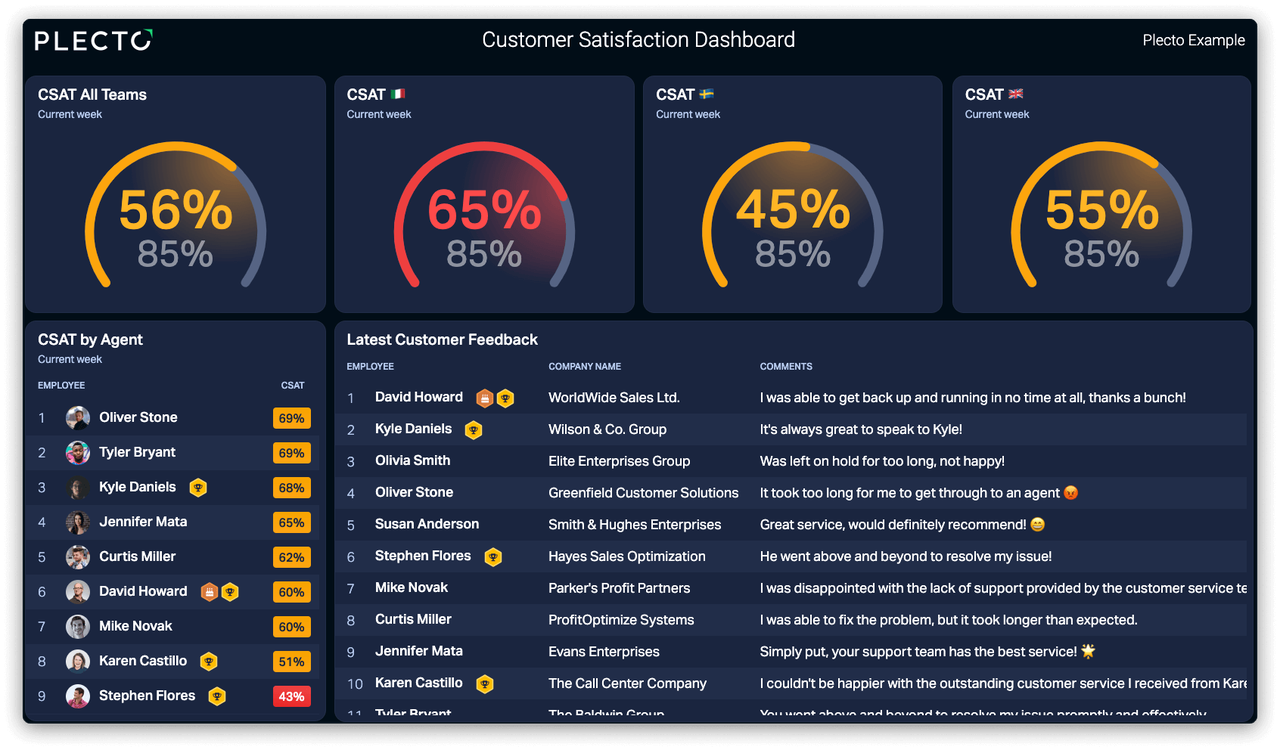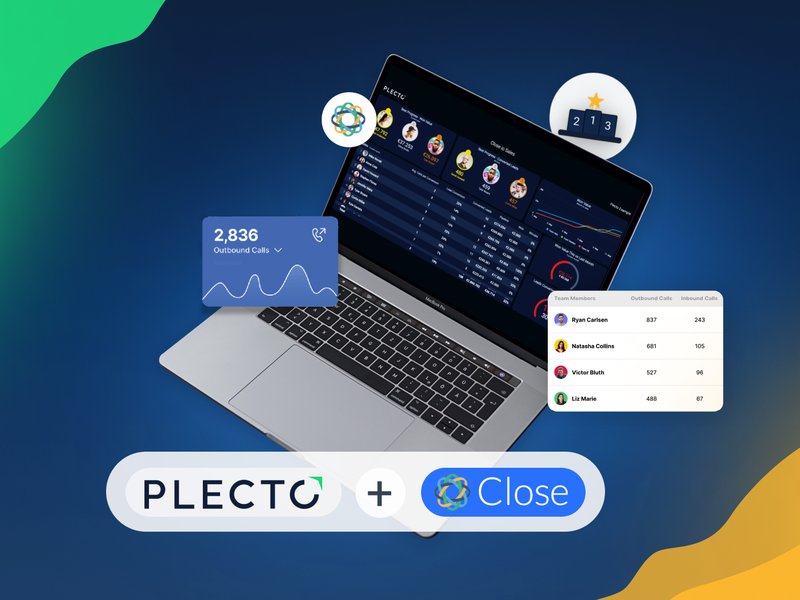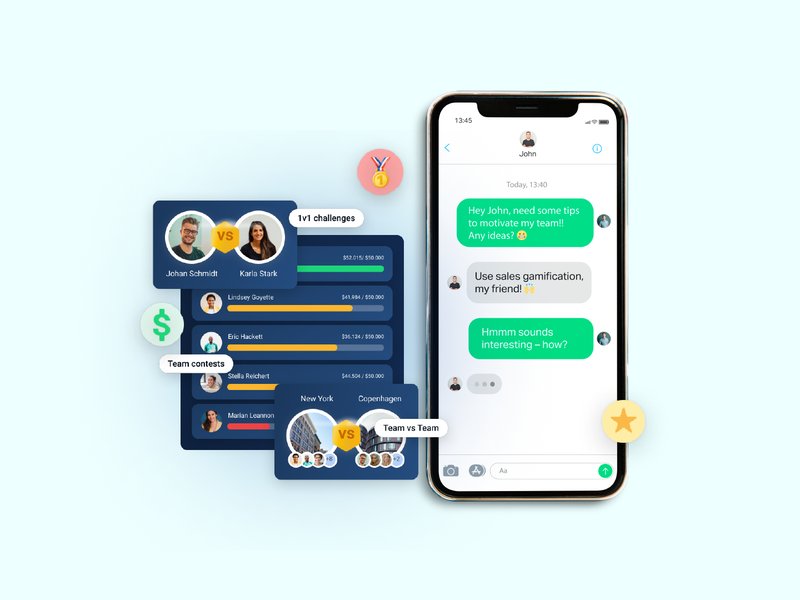Cooperation between the sales and marketing teams is a given in most companies, but there’s a new duo on the block. As companies become more customer-focused, sales and customer success are becoming increasingly intertwined, sharing responsibility for building and maintaining strong customer relationships while growing revenue.
In this article, we’ll explore the similarities and differences between customer success vs sales and how these two departments can work together to create long-term value for today’s customers.
Customer Success vs Sales: 3 Key Similarities
Both customer success and sales teams have customer-facing roles and shared responsibility for driving positive customer experiences that lead to success, satisfaction, and long-term loyalty. The main differentiator is the point at which each becomes involved in the customer journey. Generally speaking, sales is responsible for prospecting and winning new business, and then customer success is responsible for retention.
Let’s look at three of the main similarities between customer success vs sales:
1. Strong Customer Relationships
Engaged customers are more loyal and have higher lifetime values than passive customers, and that’s why many companies are moving toward value-based selling, a technique that focuses on how the product can meet each customer’s unique needs and help them reach their goals. Savvy companies understand that retaining customers takes more than simply closing the initial deal – and they’re putting their money where their mouth is by hiring customer success managers (CSMs) to build relationships, provide ongoing support and education, and guide new customers in their journey toward becoming loyal customers who are getting the most out of their product.
2. A Deep Understanding of Each Customer’s Needs
Value-based selling requires salespeople to get into the nitty-gritty of each prospect’s pain points and objectively ascertain whether the product is a good fit and how it can address their specific needs. This often results in a longer sales cycle than other techniques, but it’s an opportunity to connect with prospects on a personal level, build rapport, and really understand their needs and goals. Ideally, once a prospect becomes a newly minted customer, the sales rep should transfer their knowledge to the CSM, who will take over to keep the customer engaged and ensure that the product lives up to their expectations. The best CSMs will dive even deeper into the customer’s goals and work closely to clear roadblocks and coach them along the way.

3. Revenue Generation
Responsibility for revenue generation is a key similarity between customer success vs sales. While sales is responsible for acquiring new customers and closing the right deals, customer success is largely responsible for keeping those customers happy. Happy customers who are a good fit for the company’s products lead to excellent retention, recurring revenue – and hopefully cross-sells and upsells. Together, through effective cooperation, sales and customer success teams can increase revenue and create consistent growth.
Customer Success vs Sales: 3 Key Differences
While customer success and sales are closely related, there are some subtle but important differences that go beyond the sales department’s conversion focus and customer success’ responsibility for ensuring the relationship’s longevity.
Let’s look at three of the main differences between customer success vs sales:
Build your first dashboard.
Start your 14-day free trial today
1. Their Objectives
The sales team needs no introduction – their main task is to bring in new business. Customer success is relatively new to the party. A step beyond the reactive and more widely known customer service reps, who help to resolve customers’ issues, CSMs have the ongoing responsibility for helping customers get the most out of their purchases and making sure that they recognize the product’s value – with extra kudos if they can turn them into brand ambassadors! While CSMs might provide support when things go wrong, their primary responsibility is to onboard new customers and proactively provide information and training to keep their customers engaged while helping them to succeed. Simply put, sales is the point of contact up until a prospect becomes a customer. After that, customer success takes over to onboard the customer and develop a long-term relationship that will hopefully build loyalty and increase lifetime value. For fresh ideas on how to create an effective onboarding process, check out our Ultimate Guide to Customer Onboarding.
2. Relationship Lifecycle
The sales team’s responsibility for conversion and the customer success team’s responsibility for retention represents two different relationship lifecycles. While relationship building is an important component of successful sales, the salesperson-prospect relationship is usually transactional and short-lived. Many sales departments track sales velocity (if yours doesn’t, check out this article about why sales velocity is an important metric), so they know approximately how long it takes to move a prospect through the sales funnel. This relationship is usually a linear process of identifying the prospect’s needs, demoing the product and showcasing its value to the prospect, negotiating the contract, closing the sale, and then handing over the account to a CSM. The CSM (hopefully) has a longer and less linear relationship in which they regularly evaluate the customer’s needs and suggest ways to get the most out of their purchase, whether it’s using new features, changing workflows, or perhaps upgrading to a more robust product with advanced capabilities. A good CSM always keeps one foot in the door, looking for ways to educate their customers and uncover opportunities to cross-sell, upsell, and create more value year after year.
3. Metrics and KPIs
Being responsible for conversion, the sales team’s KPIs tend to focus on financial metrics like customer acquisition costs, new business revenue, and win rate (check out this article for 21 important sales KPIs). KPIs for customer success teams tend to reflect the importance of the post-sale relationship and helping customers reach their goals, so they usually focus on satisfaction and retention. These seven crucial customer retention metrics are a great example – most notably, net promoter score, existing customer revenue growth rate, and churn rate.
3 Ways Sales and Customer Success Should Work Together
To achieve the best results, sales and customer success teams must work together. For the sales team, this means pursuing the right customers while setting the right expectations. For the customer success team, it means minimizing churn by keeping new customers engaged and satisfied. Both teams have equal roles in maintaining the company’s financial equilibrium. If sales over-promises what the product can do, not even the most skilled CSM will be able to retain a disillusioned customer – and if the customer success team fails to keep customers engaged, sales will have a hard time replacing them at the same rate as they’re defecting.
Since sales is usually a customer’s first point of contact with a company, it’s up to them to set reasonable expectations about price, service, and what the product can and can’t do. Satisfied customers are usually loyal customers who might eventually upgrade to new or more expensive products and bring in new customers through positive word-of-mouth. CSMs will have a much easier time retaining customers if the sales department does a good job of qualifying customers and setting expectations.
Here are three ways that customer success vs sales should work together to achieve the best results:

1. Establish a handover process
From the moment a lead becomes a prospect, the sales department has been collecting information about their pain points, expectations, requirements, and goals. Sharing this information with the customer success team will make it easier for the CSM to connect with new customers and anticipate their needs with seemingly psychic accuracy. Showing an understanding and a proactive interest in the customer’s post-sale needs shows that the company appreciates their business – and it’s an easy way to strengthen loyalty early in the relationship.
2. Share knowledge both ways
Knowledge sharing should be a reciprocal process, not a one-way street from sales to customer success. CSMs have a perfect vantage point for identifying the attributes of good-fit customers – and the opposite. Sharing this information between CSMs and sales can help sales to refine their strategies and pursue the right customer segments, making the CSMs’ jobs easier while hopefully improving close rates, increasing lifetime values, and lowering churn rates.
3. Have regular check-ins
The best results cannot be achieved in silos. Regular check-ins are an opportunity to identify good- and bad-fit customers, communication issues, deficiencies in the handover process, and ideas for improving customer success. This is also a perfect time to collaborate on cross-sell and upsell strategies based on information shared with the sales rep during the sales process and the CSM’s knowledge of the customer’s current situation and feedback after using the product.
Strengthen & Incentivize Collaboration
Visualizing relevant KPIs for both teams on Plecto’s real-time dashboards is an excellent way to share information and strengthen collaboration between sales and customer success teams.
Plecto also includes built-in collaboration-boosting features like leaderboards, contests, and instant notifications to motivate teams to work together.
Sign up for a free 14-day trial of Plecto and see how great collaboration can lead to higher retention and more revenue!




